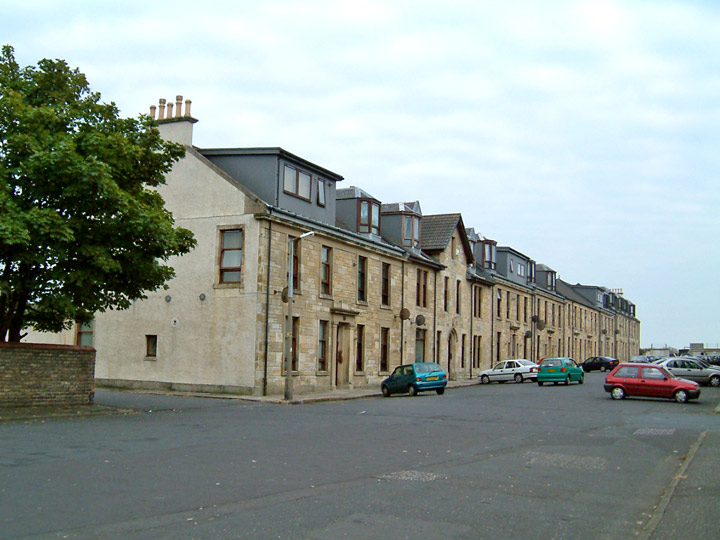NON-FOOTBALL STORIES 1939
While looking through old documents, it is almost inevitable that the
reader's attention will be drawn from the intended target to other articles.
The reports below were found in old Scotsman newspapers. Although they
have no football content, they may be of interest.
STREET PILLAR
COMMUNICATION
Brigadier-General R M Dungeon, His Majesty’s Inspector of
Constabulary for Scotland and civic representatives of Saltcoats, Ardrossan and
Stevenston attended the inauguration of the pillar system of communication in
Saltcoats Police Station yesterday.
Seventeen pillars have been erected in the three towns in direct communication
with Saltcoats Police Station.
There are two methods of communication on each pillar – once for the public and
the other for the police. There is
also a light on each pillar which can be flashed to call a policeman on the
beat. Brigadier-General Dungeon
emphasised that the value of the system lay in the cooperation of the public
with the police and he said that in Glasgow last year, an enormous amount of
valuable information had been given to the police by the public using the
phones. Chief Constable Munro,
Ayrshire, said that this was the beginning of a system which would link up the
whole of Ayrshire.
The Scotsman, 14 July 1939, page 8
ICI
FACTORY EXPLOSION – TWO MEN KILLED IN SOUTH-WEST SCOTLAND
An explosion
occurred at a factory in South-Western Scotland on Thursday night (9 November
1939) as a result of which, two men lost their lives.
The following statement has been issued by the management.
‘Imperial Chemical Industries Limited regret to announce that, as a
result of a small explosion in one of their factories at about 9pm on 9
November, one worker lost his life and another received injuries from which he
has since died. There was no
material damage to plant or property.
The names of the workers who lost their lives are Walter Maxwell, aged
43, of Winton Street, Ardrossan (shown below in 2002), married and Arthur
Findlay, aged 22 of Burnbank Street, Stevenston, single’.
The Scotsman, 11 November 1939

HIDE-AND-SEEK
FATALITY – BOY’S FALL OVER CLIFF IN PARK – ARDROSSAN CLAIM FAILS
The duty
upon authorities for the maintenance of public parks was referred to by Lord
Stevenson in the Court of Session yesterday (20 December 1939) when he gave a
judgement in favour of the Burgh of Ardrossan in an action brought against them
by Peter Farrell, 93 Hayburn Street, Glasgow, who claimed £400 as damages for
the death of six-year-old son, Michael.
The boy, while playing hide-and-seek with other children in Castle Hill
Park, which is under the defenders’ control, fell over a precipice on 18 July
1938 and died from his injuries four days later.
Lord Stevenson said that counsel for the pursuer laid emphasis on the
fact that children often played on the ground and that the police had warned
them of the danger of doing so and argued that it was the duty of the defenders
to prevent a child getting access to any part of the cliff and that they failed
to see that the cliff was sufficiently fenced to prevent children getting there.
The duty upon those responsible for the maintenance of public parks did
not, his Lordship thought, extend to fencing physical features which might prove
attractive to young children from which they might suffer damage should they
stumble and fall when playing thereon.
They were entitled to maintain a cliff in its natural condition.
Crags and cliffs were natural features of parks in Scotland, a good
example being the King’s Park, Edinburgh.
There was no obligation to fence any features which might be dangerous to
children. Were this necessary, a
large number of our parks would require to be shut and His Lordship thought what
was more important still, a great deal of our shores would require to be fenced
to keep children from them. There
were many cases in their Reports which had decided that it was unnecessary to
fence ponds and other physical features which might be productive of injury to
careless persons or young persons frequenting these parks.
His Lordship did not think that the defenders were under obligation to
fence the ground to prevent the children playing thereon and he would assoilzie
them from the conclusions of the summons.
The counsel for the pursuer were Mr J B Paton, King’s Counsel and Mr John
Wheatley. The solicitors were Allan
McDougall and Company, SSC, Edinburgh and R Maguire, Cook and Company, Glasgow.
The counsel for the defenders were Mr Charles Macintosh, King’s Counsel
and Mr H R Leslie. The solicitors
were Allan, Dawson, Simpson and Hampton, WS, Edinburgh and Jno Shaugnessy and
McColl, Glasgow.
The Scotsman, 21 December 1939
